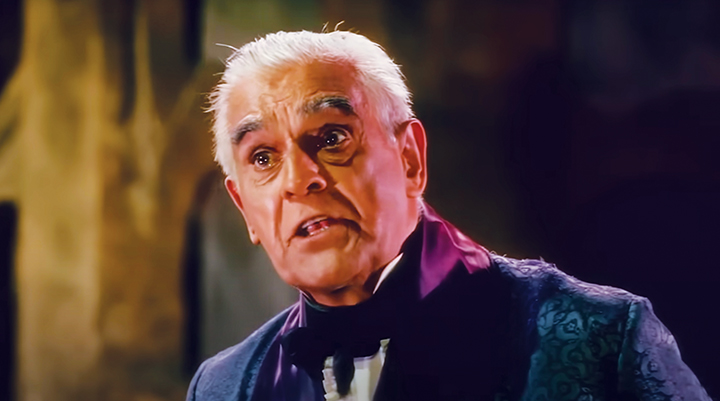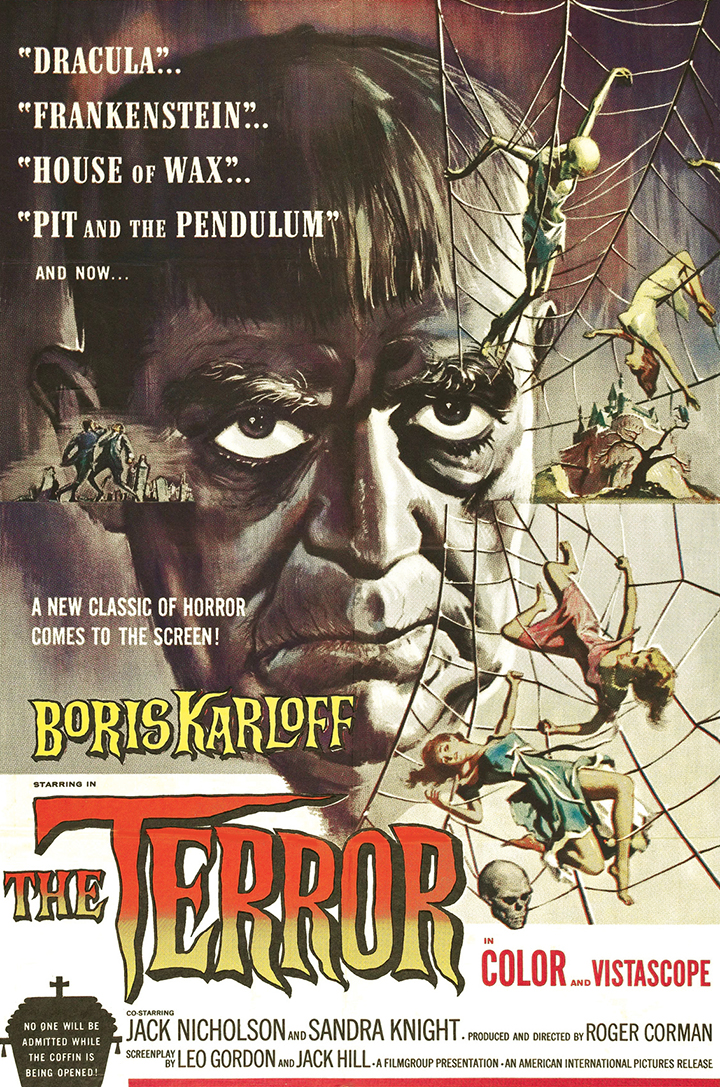
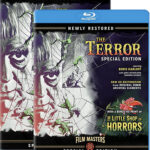 60th anniversary of horror curiosity
60th anniversary of horror curiosity
‘The Terror: Special Edition’
Film Masters
Two-disc set $29.95 (Blu-ray), $19.95 (DVD)
80 minutes plus bonus film and special features
Not rated
By Mark Voger, author
‘Monster Mash: The Creepy Kooky Monster Craze in America 1957-1972’
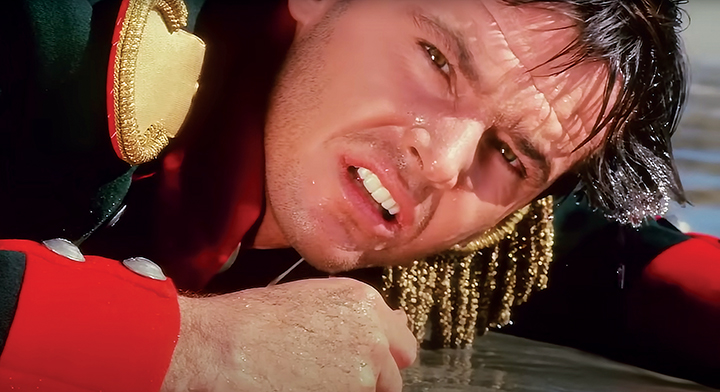
It’s been 60 years since Roger Corman‘s impromptu experiment in tag-team filmmaking, “The Terror” (1963), first flickered across the silver screen.
As Baron Von Leppe (Boris Karloff) says to Lt. Andre Duvalier (Jack Nicholson) in the fabled quickie: “Forgive me for reviving painful memories.”
But was it a quickie? “The Terror” took nine months to complete. And though Corman is credited as sole director, four or five second-unit directors (including Francis Ford Coppola) gave a heavy assist to bring in the horror curiosity that co-starred Karloff near the end of his career — and Nicholson at the start of his.
“The Terror” is back in the spotlight thanks to Film Masters’ extras-packed home video release of an HD restoration from 35mm archive elements. Find out more HERE.
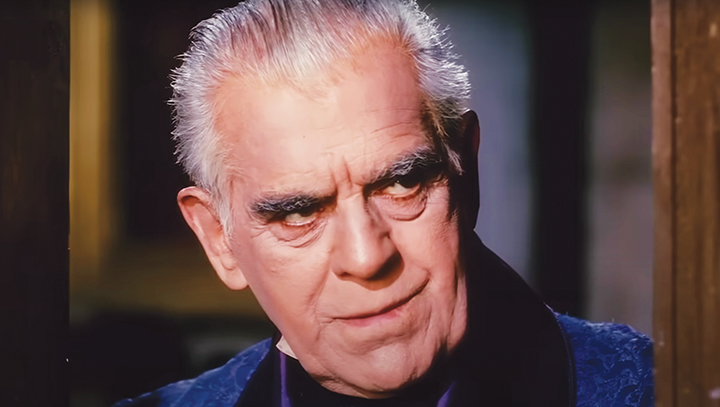
Pundits love to ridicule the film for its not-strictly-logical plot (which resulted from the aforementioned tag-team writing and filming). But “The Terror” — about a young lieutenant who enters into a tug-of-war with an addled old baron over a woman who may or may not be a ghost — holds together.
“The Terror” is beautiful to behold, with magnificent Big Sur exteriors; shrewd use of the sprawling sets from Corman’s previous film “The Raven” (1962); skillful cinematography by uncredited Oscar winner Floyd Crosby; and thoughtful second-unit work by emerging talents Coppola, Jack Hill, Dennis Jakob and Monte Hellman. The icing on top is a plaintive, foreboding Gothic score composed by the great Ronald Stein, whose work has rescued many a mediocre genre film. (For my money, this is Stein’s most evocative, memorable score, one you can listen to without watching the movie.)
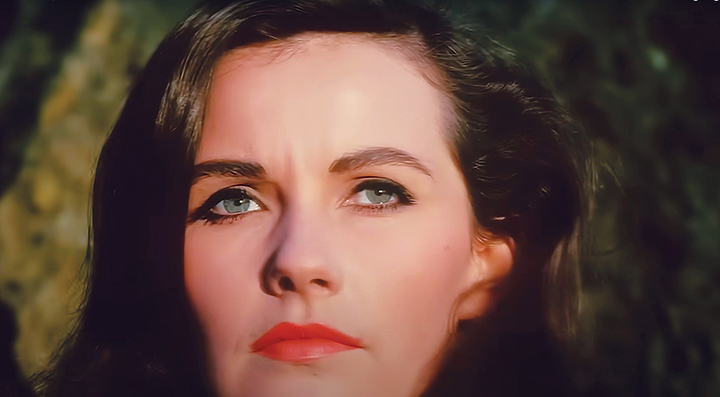
The story behind “The Terror” could itself be a “meta” movie, a Hollywood exposé, about the vagaries of low-budget filmmaking in the 1960s: An aging horror-movie icon (Karloff) owes a B-movie director (Corman) two more days of shooting after wrapping a Poe adaptation (“The Raven”). A script is whipped up (by Leo Gordon), and Corman enlists three little-known actors (Nicholson, his then-wife Sandra Knight, and Bronx favorite son Dick Miller) to play opposite Karloff.
It should be noted that Karloff was not happy about Corman squeezing another movie out of him. “I begged him not to do it,” the actor later said.
Following two very fruitful days with Karloff — Corman got gold out of his reluctant 75-year-old star — the ongoing production periodically languished because, according to Corman, “there was no big rush.”
As he told me in 1994: “What it amounted to was this. We had these sets left over from ‘The Raven,’ so I shot two days on the sets with Boris before he had to go back to England.
“I brought in a young, unknown actor who was a friend of mine, Jack Nicholson, and his wife at that time, Sandra Knight. I said to them, ‘You’re going to end up as the leads in this picture. I don’t have the rest of it written’ — because we put the whole thing together in a couple of days — ‘so just come in. We’ll play these two days with Boris, then I’ll write the rest of the picture, and we’ll come back and shoot the rest.’”
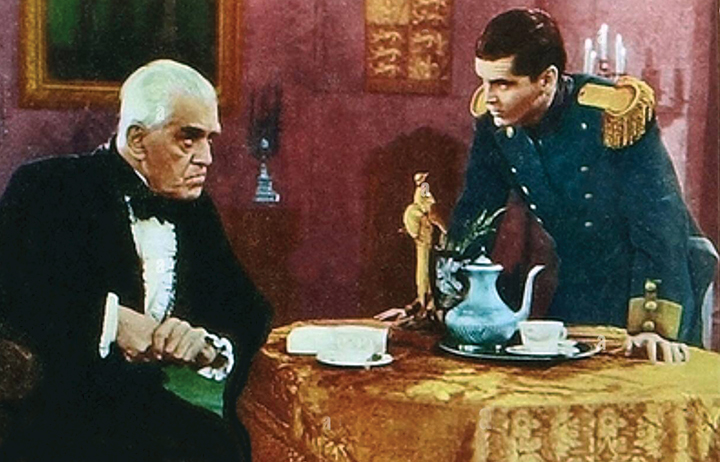
Why didn’t Corman direct the balance of the film?
“I couldn’t shoot the other sections, because we were going non-union and I was signed with all the unions and everything,” Corman told me. “So my ace assistant at the time, Francis Coppola, shot a portion. Then he signed a contract with Warner Bros. And it just kept going from director to director. There was no big rush.
“But it finally finished up with, I think, Jack (Nicholson) actually shooting the last day. He said to me, ‘Roger, every idiot in town has directed part of this picture. You might as well let me finish the thing up.’ I said, ‘OK, Jack.’”
Fool-proof producer
But Corman conveniently left out the fact that he was trying to pull a fast one on Samuel Z. Arkoff, the cigar-chomping co-founder of American International Pictures (AIP). Corman was making unauthorized use of production designer Daniel Haller‘s sets for “The Raven,” which were still standing — and which AIP had paid for — to benefit Corman’s own company, Filmgroup.
But, as Arkoff noted with a laugh, “not too much gets by me.”
Said the producer when we spoke in 1991: “We had a wrap party for ‘The Raven.’ And, in fact, my wife and my sister-in-law put all the food together. I noticed that the cemetery sets for ‘The Raven’ were still standing and I thought, ‘Gee, that’s funny.’ They should have been torn down by then.
“Some instinct told me to go back the following Monday, and I did. And there was Roger with a clapboard that said ‘The Raven.’ I went up to Roger and said, ‘So we’re still shooting “The Raven,” are we?’”
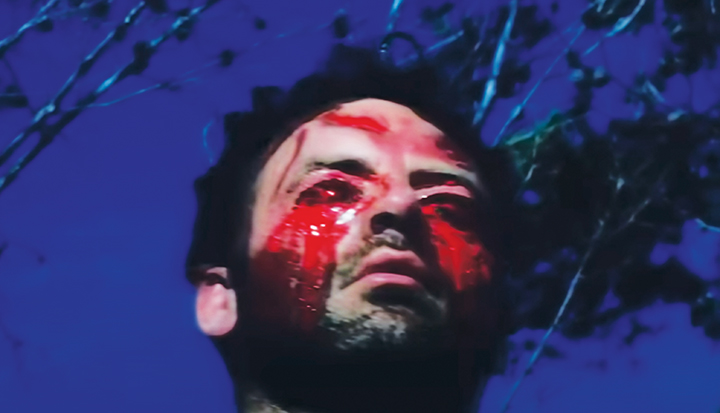
“The Terror,” it turned out, was distributed by American International Pictures. Three members of the cast — Nicholson, Miller and Jonathan Haze (seen above) — were earlier in Corman’s “Little Shop of Horrors” (1960), which is paired with “The Terror” on Film Masters’ release.
Within less than 10 years after the 1963 release of “The Terror,” Nicholson became a bona fide movie star. Arkoff had a theory about the actor’s meteoric rise in the industry.
“A lot of people have asked me why did it take a certain amount of time for Jack Nicholson to hit stardom,” Arkoff said. “And the answer, in my opinion, is this: In the ’50s, the ideal male hero was a good-looking, smart-alecky, wise-cracking kid, a la (Edd) ‘Kooky’ Byrnes. Do you remember ‘Kooky’ Byrnes?
“But Jack Nicholson always had a sardonic look. And sardonic looks were not liked in the ’50s. So after the hopes of the ’60s finally faded away with Kent State, Jack Nicholson — with his sardonic expression and his fatalism — really started to make an impression.”
Six-member cast

“The Terror” has but six cast members, not counting the horse Nicholson rode in on. They are:
■ BORIS KARLOFF as Baron Von Leppe/Eric, a wealthy old shut-in who talks to paintings. Quote: “Oh, I could have taken her, as nobles have taken the daughters of peasants since the beginning of time. But I loved her, and she became the Baroness Von Leppe.”
■ JACK NICHOLSON as Lt. Andre Duvalier, a soldier in the French army who pursues a mysterious beauty. Quote: “My father was the Count Duvalier — was, until they spilled his head into a basket one morning in the Plaza de Concorde.”
■ SANDRA KNIGHT as Helene/Ilsa, the mysterious beauty — or is she the ghost of Baroness Von Leppe? Quote: “I have damned you as you damned me!”
■ DICK MILLER as Stefan, the Baron’s loyal butler who is always at-the-ready with a decanter of cognac. Quote: “So! Must you intrude upon the dead as well as the living?”
■ DOROTHY NEUMANN as Katerina, the vengeful witch who squats in a hovel on the Baron’s grounds. Quote: “She will drive him to God’s one unpardonable sin — suicide!”
■ JONATHAN HAZE as Gustaf, a doomed forest dweller who bunks with the witch. Quote: “She loves you. You must help her. Tonight, her soul cries out for release. Go back.”
The butler did it
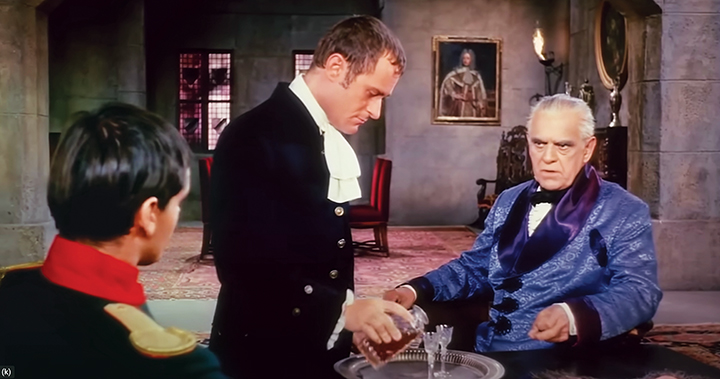
As the manservant of a Napoleon-era Spanish baron, Dick Miller speaking in a Bronx accent was the least of “The Terror’s” incongruities.
As the actor who pours the cognac while Karloff and Nicholson trade hastily written Gothic cliches, Miller subtly supplied much-needed glue to these scenes.
“Roger had called Leo Gordon to write some generic Gothic horror scenes,” Miller recalled when we spoke in 1993. “He said, ‘Just write a bunch of scenes for Boris Karloff and Jack Nicholson.’ I was originally playing just a straight butler — just somebody for Boris to talk to. We finished shooting. Karloff went back to England.
“About three months or so later, Roger said, ‘We’re going to finish that picture.’ I didn’t even know what he was talking about. ‘What picture? What are you talking about?’ Roger said, ‘That thing we shot. We’re going to Big Sur and do a lot of exteriors. We’ve got a little story here. You’re now the lead villain.’
“This is why everybody always says, ‘Gee, you were very good as the butler — we never suspected you.’ Because I didn’t know what I was doing!”
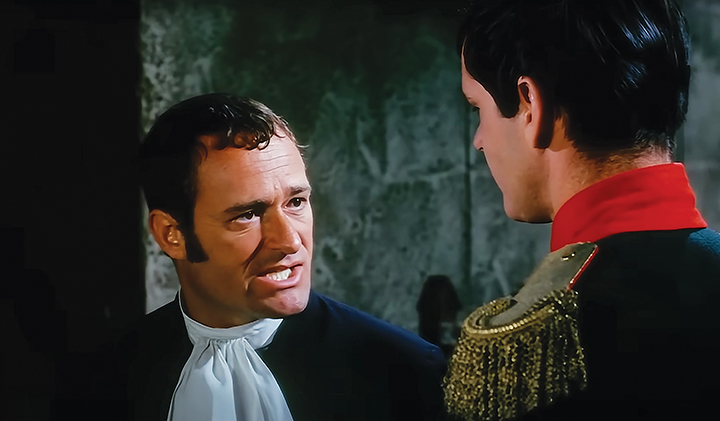
Despite Karloff’s reluctance to make “The Terror,” Miller reported that the veteran actor was a delight to work with.
“Karloff, to me, was one of the highlights of my 40 years out here making films,” Miller said. “I was introduced to the man, and we became fast friends. He was well into his 70s at the time. He did fight scenes in the water. He knew all his lines. He was amazing.
“He said some funny things. I talked to him between takes, and I’d say, ‘What does that mean?’ And he’d say, ‘I don’t know what it means. But whenever I’m in trouble, I do an imitation of myself. I say (imitating Karloff imitating himself), “I don’t know what that means!”’ These funny things. He was a great guy.
“I visited him at his hotel here. A year or two later, when he came back to this country, the first call I got was from him. He said, ‘Would you come and have tea with my wife (Evelyn Karloff) and myself at the hotel?’ I was very surprised.”
As for Nicholson, who left behind the world of B-movies with his Oscar-decorated career: “Jack and I talk on rare occasions. When we speak, I think we both have a great deal of respect for each other. We live in different worlds, different stratas. I can’t go to Cannes for breakfast and then go skiing in Aspen that afternoon.”
‘Terror’ fun facts

■ Corman ordered Gordon to write a flood as the climax of “The Terror” because he had already burned down the castle in “House of Usher” (1960). Though 75 and suffering with arthritis and emphysema, Karloff tussled with Knight and Miller in chest-high water.
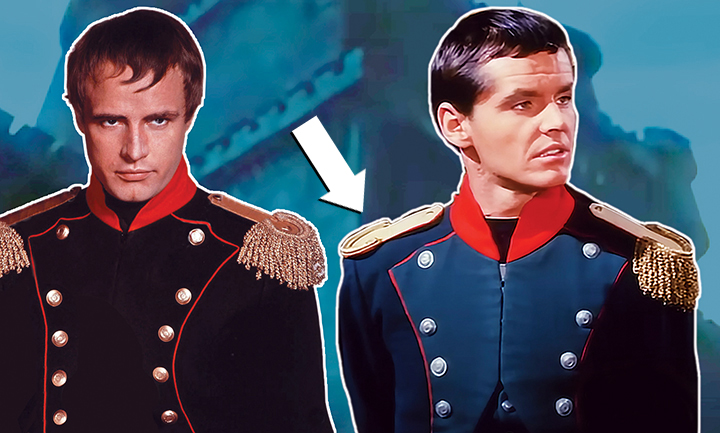
■ Nicholson wore one of Marlon Brando‘s costumes as Napoleon in “Désirée” (1954). However, the gold frills on the epaulet of Nicholson’s right shoulder are missing. (I’ve never seen this mentioned in all of these 60 years. Unless proven otherwise, consider this a MarkVoger.com scoop!)
■ Corman shot of all Karloff’s scenes in two days, never once “slating” the shots; Corman simply ordered Floyd Crosby, his director of photography, to start and stop the camera at his command.
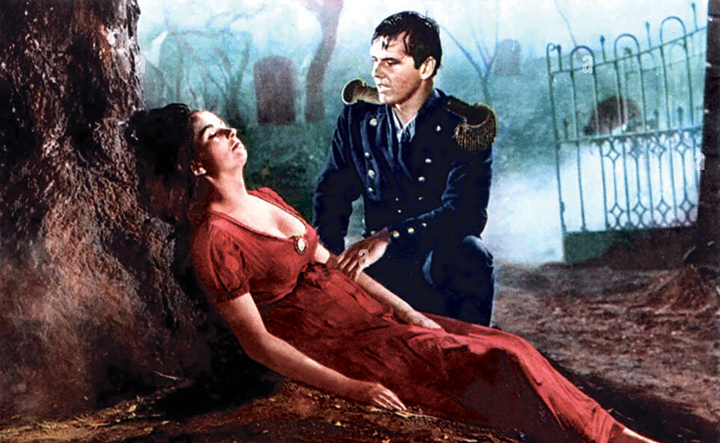
■ Nicholson’s then (and only) wife, Knight, was pregnant while the couple filmed exteriors in Big Sur shot by Coppola. Knight was reportedly in her eighth month while filming “The Terror’s” climax in which she reclines against a tree before transforming into a goopy skeleton. Knight gave birth to Jennifer Nicholson later in 1963. The couple divorced in 1968.
■ The “Terror” script begun by Gordon was finished by Hill, who later directed Karloff’s final four movies for Azteca Films, a Mexican studio.
■ Much footage from “The Terror” is seen in “Targets” (1968), the directorial debut of Oscar winner Peter Bogdanovich in which Karloff played a horror movie star named Byron Orlock.
Post script
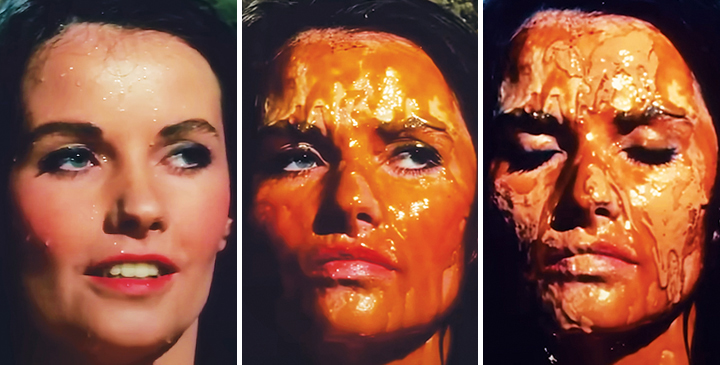
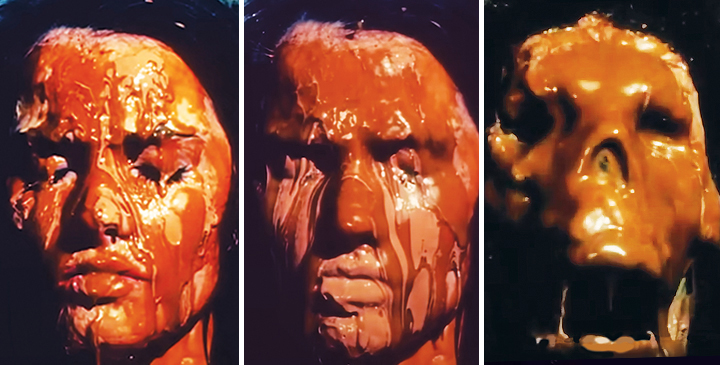
I’ve always thought of “The Terror” as the moment when Old Hollywood passed the torch to New Hollywood, teaming as it did Boris Karloff and Jack Nicholson. KARLOFF — a venerable star who thrived during the golden age of the Hollywood studios. NICHOLSON — a young punk looking uncomfortable in Napoleonic garb with little discernible acting talent, who would nonetheless rule the industry.
Today, it seems eerily prophetic when Karloff as Von Leppe remarks to Nicholson as Duvalier, as they tour the sets of “The Raven” which served as an impetus for this thrown-together production, “What you see, lieutenant, are the remains of a noble house. Relics … ghosts of past glories.”
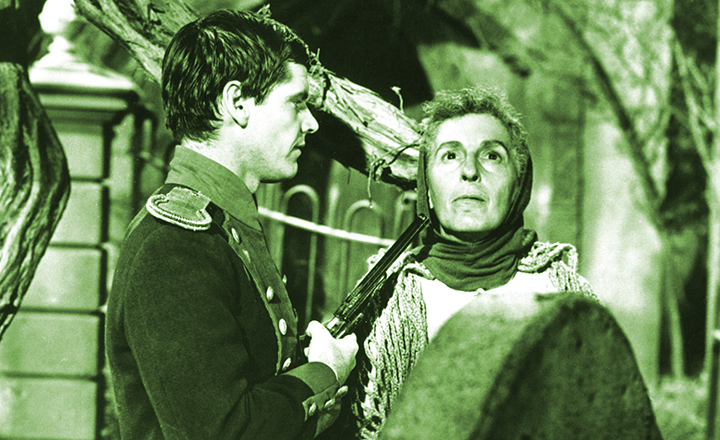
Film Masters’ release includes a bonus HD print of Corman’s black-and-white horror comedy “Little Shop of Horrors” (1960), which features three cast members of “The Terror”: Nicholson, Haze and Miller. Both films have commentary tracks (with Haze weighing in on “Little Shop”) and trailers recut from restored film elements.
An accompanying 22-page booklet presents an essay by C. Courtney Joyner in which he makes a compelling case for something I’ve believed for years: that “The Terror” deserves to be included in Corman’s famous Edgar Allan Poe cycle of films, rather than its “redheaded stepchild” status (Joyner’s term) of the past six decades. “The Terror” was made by the crack team of Corman, Crosby, Haller and Stein, all important contributors to the cycle. If, instead of the title “The Terror,” the film was called “A Descent Into the Maelstrom” or “Mystification” or “The Devil in the Belfry” (all Poe story titles), it wouldn’t be a question.

Film Masters’ release is not the first restoration of “The Terror” on home video. It was also scrubbed up by Film Chest (in 2011) and The Film Detective (in 2016). Why all this hoo-ha for a movie that is not universally respected, or for that matter, even widely known? Two words: public domain.
We must also factor in all of the film’s various (non-restoration) DVD and even VHS releases over the years; “The Terror” showed up in multi-film compilations and solo “budget” releases, always in atrocious prints (making an already challenged film harder to love). From a marketing standpoint, this all puts “The Terror” among the most ubiquitous of vintage horror films — if not the most watched.
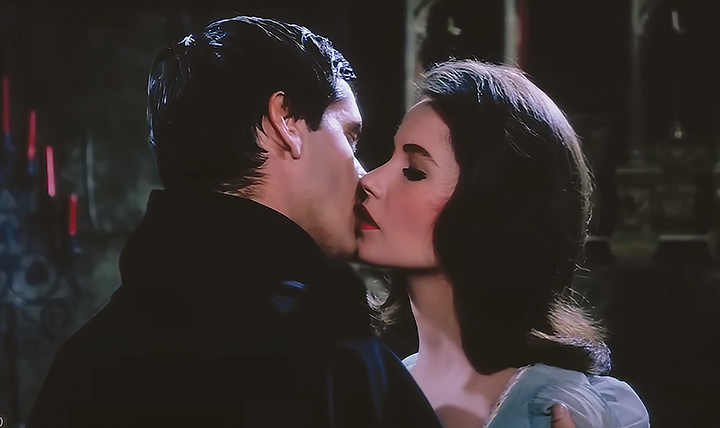
Alas, I’ve never spoken or corresponded with a single person on God’s green Earth who, like me, loves “The Terror.” I feel alone in this world. I still remember the first time I saw it, probably around 1970. I was/am a huge Karloff fan, and never missed an opportunity to scratch another “Karloffilm” (as Forry Ackerman always put it) off my long must-see list. But “The Terror” was airing at 1 a.m. on a Saturday night over Channel 6 in Philly. As a grade school kid, this was past my bedtime. I resolved to sleep lightly and later sneak downstairs to watch it with the sound down, but I overslept. I only got up in time to catch the climax in which Karloff uncovers the rotted corpse of Ilsa, and Nicholson “rescues” Helene from the flood. With those few minutes to judge by, I thought: “Oh, man, I just missed one of the greatest horror movies ever made!”
